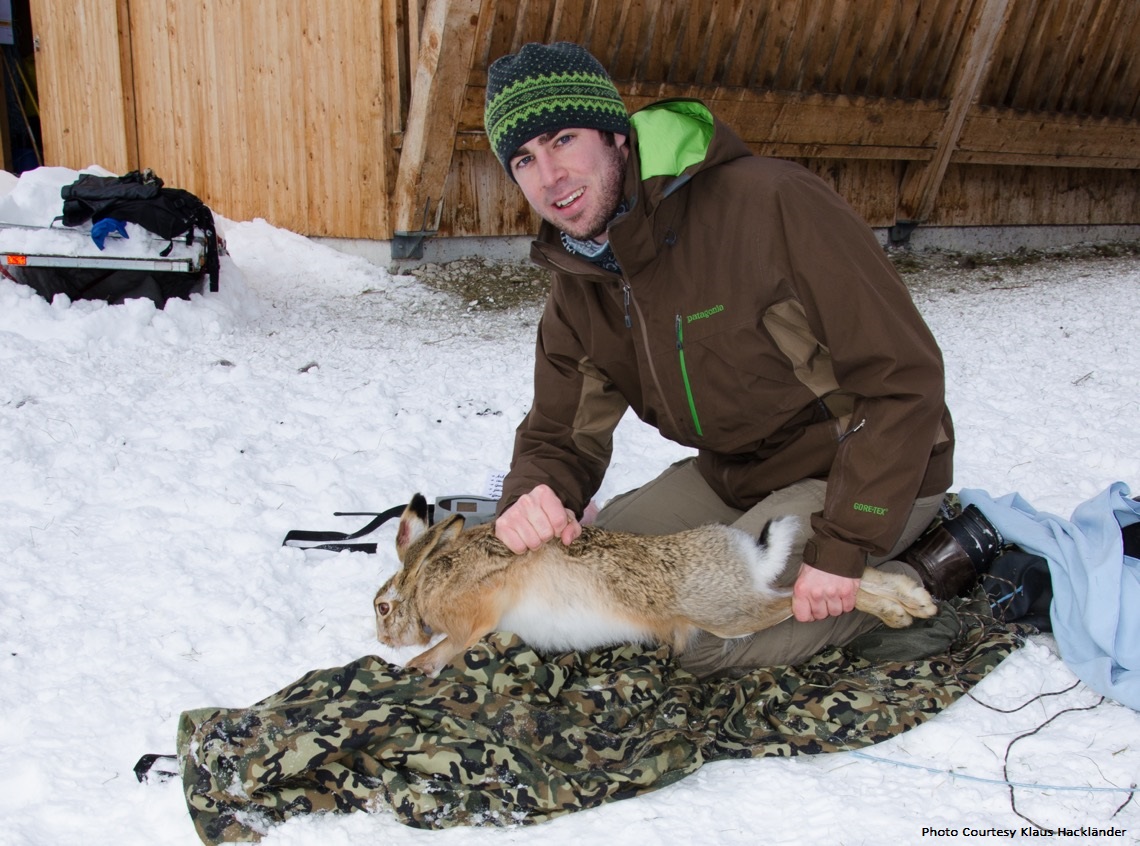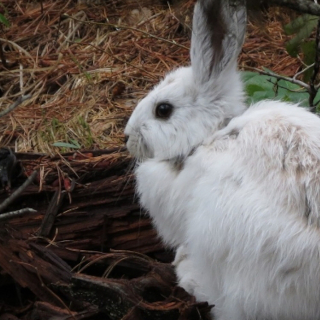Dr. Klaus Hackländer on his work with mountain hares

Species around the world are facing challenges from global warming and Scott Mills and his team are at the sharp end of studying this by considering snowshoe hares that change from brown to white in the winter, only to confront brown ground. It is great to join the Mills lab during my sabbatical at NC State and be part of the snowshoe hare team. Scott and I met at the last World Lagomorph Conference in Vienna and we became aware that we both work on similar model species. My focus in Europe is on the Mountain hare (Lepus timidus) which was introduced to you already some weeks ago. Whereas Marketa will work in Scotland, I focus on the Alps where we find the Alpine mountain hare (L.t. varronis) as as a glacial relict. Mountain hares have a similar threat like snowshoe hares namely global warming leading to a shorter duration of snow cover in winter. Milder winters lead to a greater proportion of mismatching hares which have a lowered survival rate. We showed already that mountain hares respond to that by moving up towards higher altitudes. However, you can imagine that this strategy has its limits. In contrast to snowshoe hares they face another threat which is the European hare (L. europaeus) which stays brownish all year round and moves to higher altitudes, but with twice the speed than mountain hares. We published already evidence for introgression between the two hare species which will lead to a silent extinction of mountain hares. Currently, two doctoral theses on this topic run at my home university BOKU. Maik Rehnus is analyzing habitat use and distribution change in mountain hares in Switzerland, Stéphanie Schai-Braun is concentrating on behavioral interactions between mountain and European hares in the Austrian province of Vorarlberg . Our methods include GPS telemetry, botanical analyses of fecal pellets and genetic monitoring of harvested individuals. A good example for the current threat for mountain hares in Vorarlberg is our first catch: a European hare in an area where hunters convincingly stated that there are only mountain hares.
Feature Image: Field assistant Gernot Heigl with trapped and collared European hare
